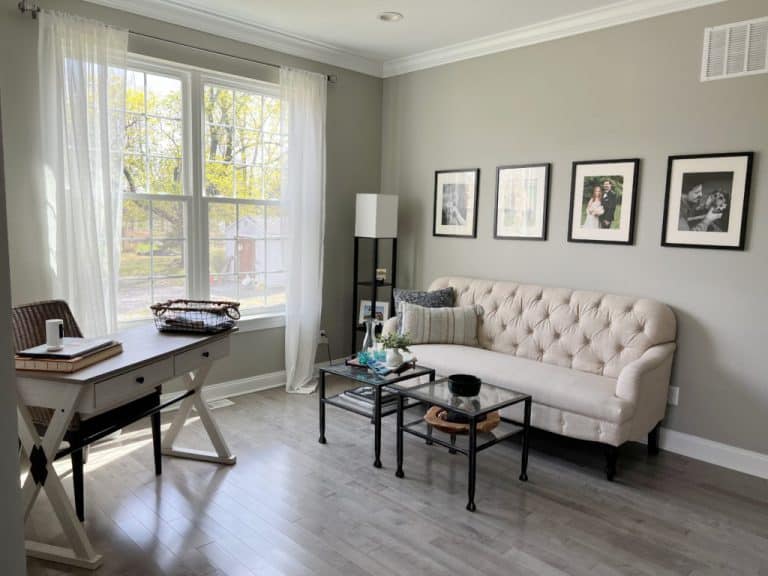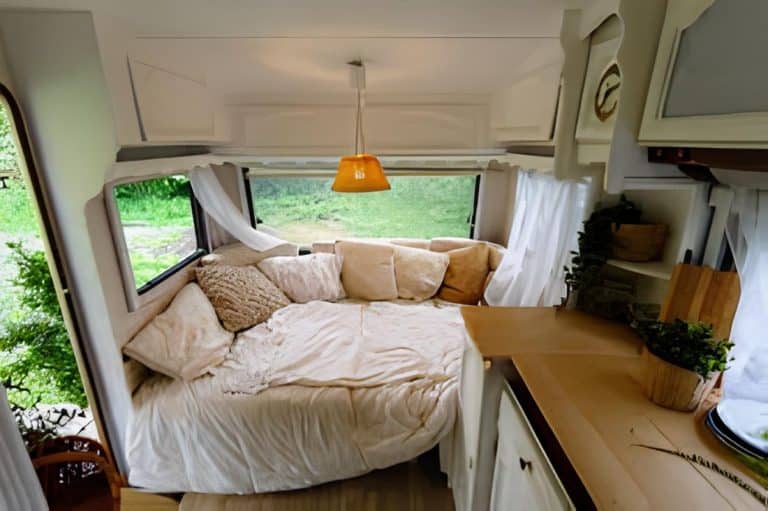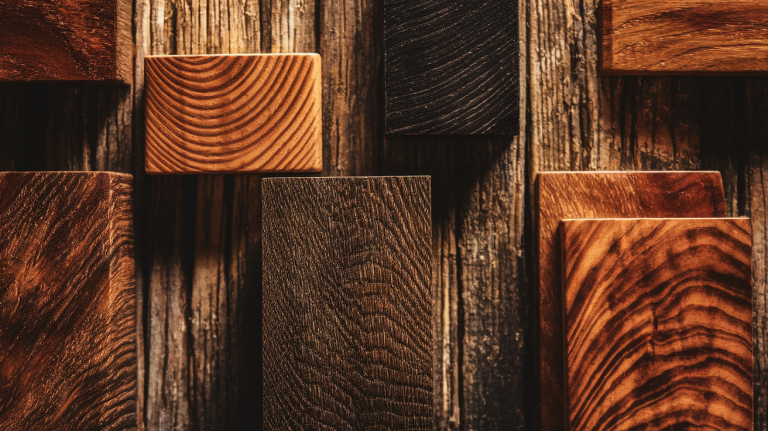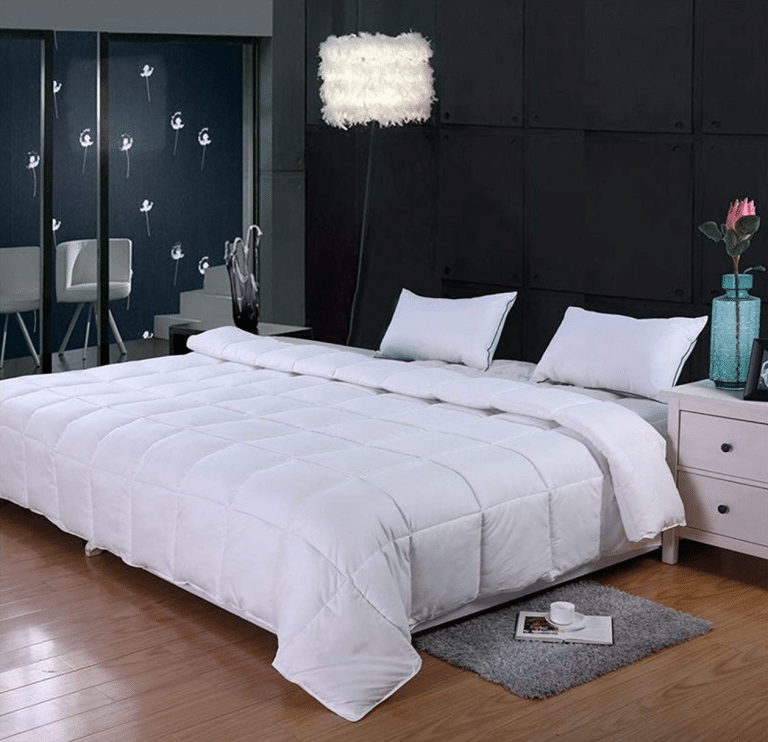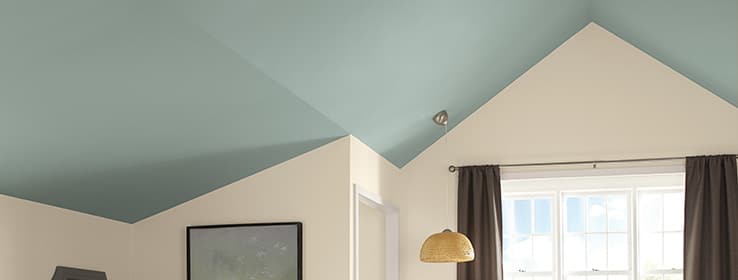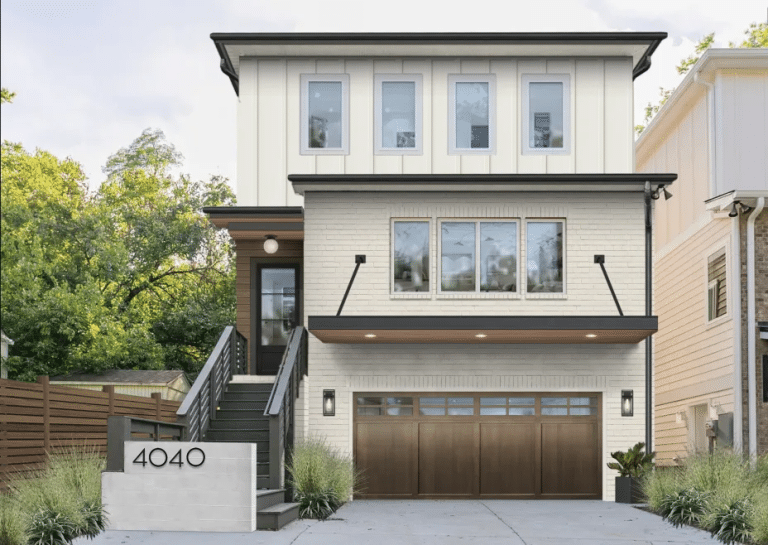From Forest to Luxury: The Rarest Woods in The World
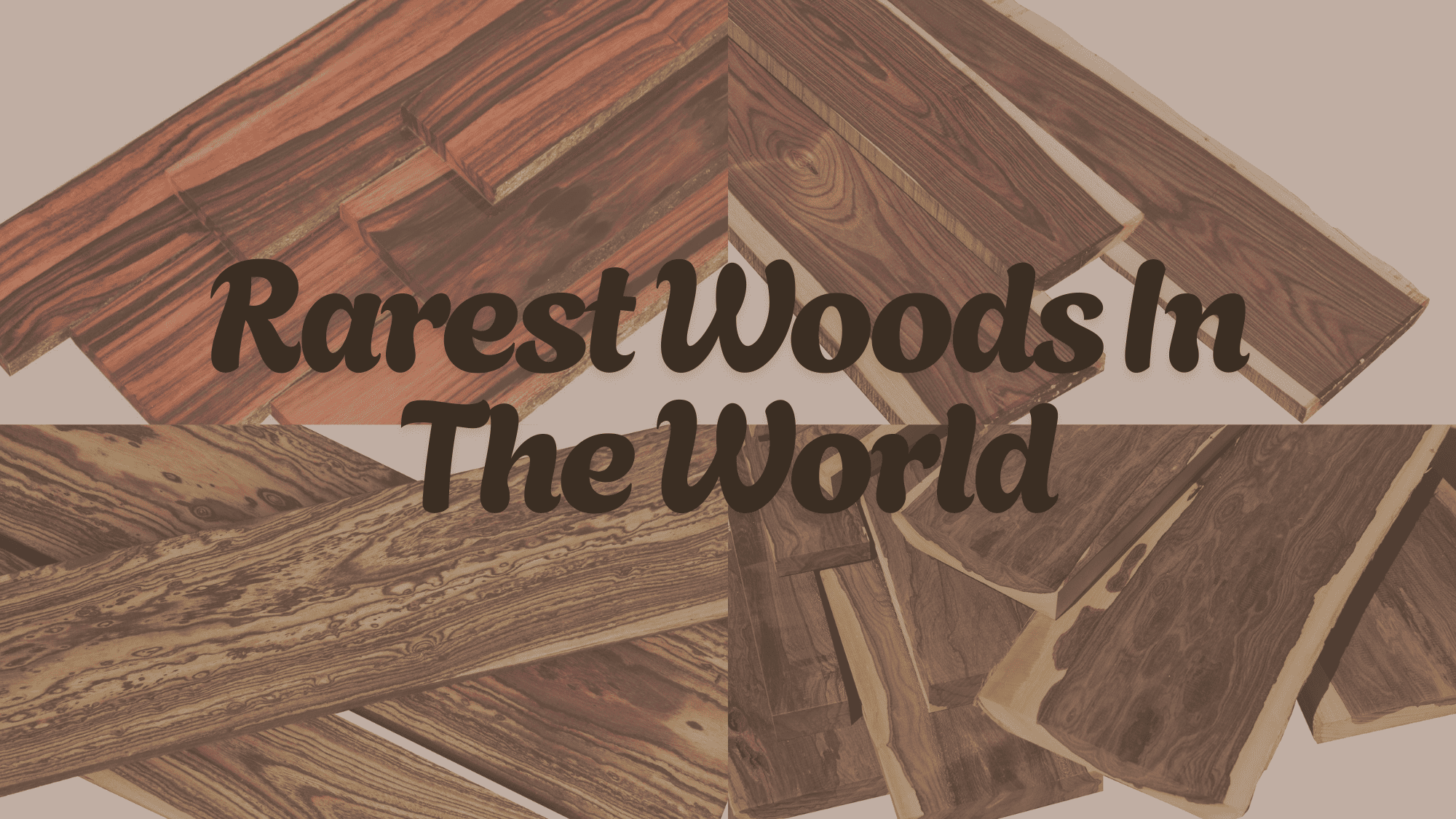
Rare woods represent the intersection of natural scarcity and extraordinary craftsmanship. These botanical treasures, often guarded by remote locations, slow growth rates, and strict conservation laws, command staggering prices in global markets.
From the rich hues of African blackwood to the intricate patterns of amboyna burl, these materials attract collectors, master craftspeople, and luxury manufacturers willing to pay premium prices.
This article examines the rarest and most costly woods worldwide, considering their unique characteristics, limited availability, and the factors that position them among the most sought-after natural materials in existence.
Luxury Woods: Ranked by Cost and Rarity
This section looks at the extraordinary rarity and steep prices of the world’s most sought-after woods. From Agarwood to Brazilian Rosewood, each wood is ranked by its cost and availability, highlighting the factors that make these natural treasures so valuable.
1. Agarwood – $10,000+ per kilogram (high grade)
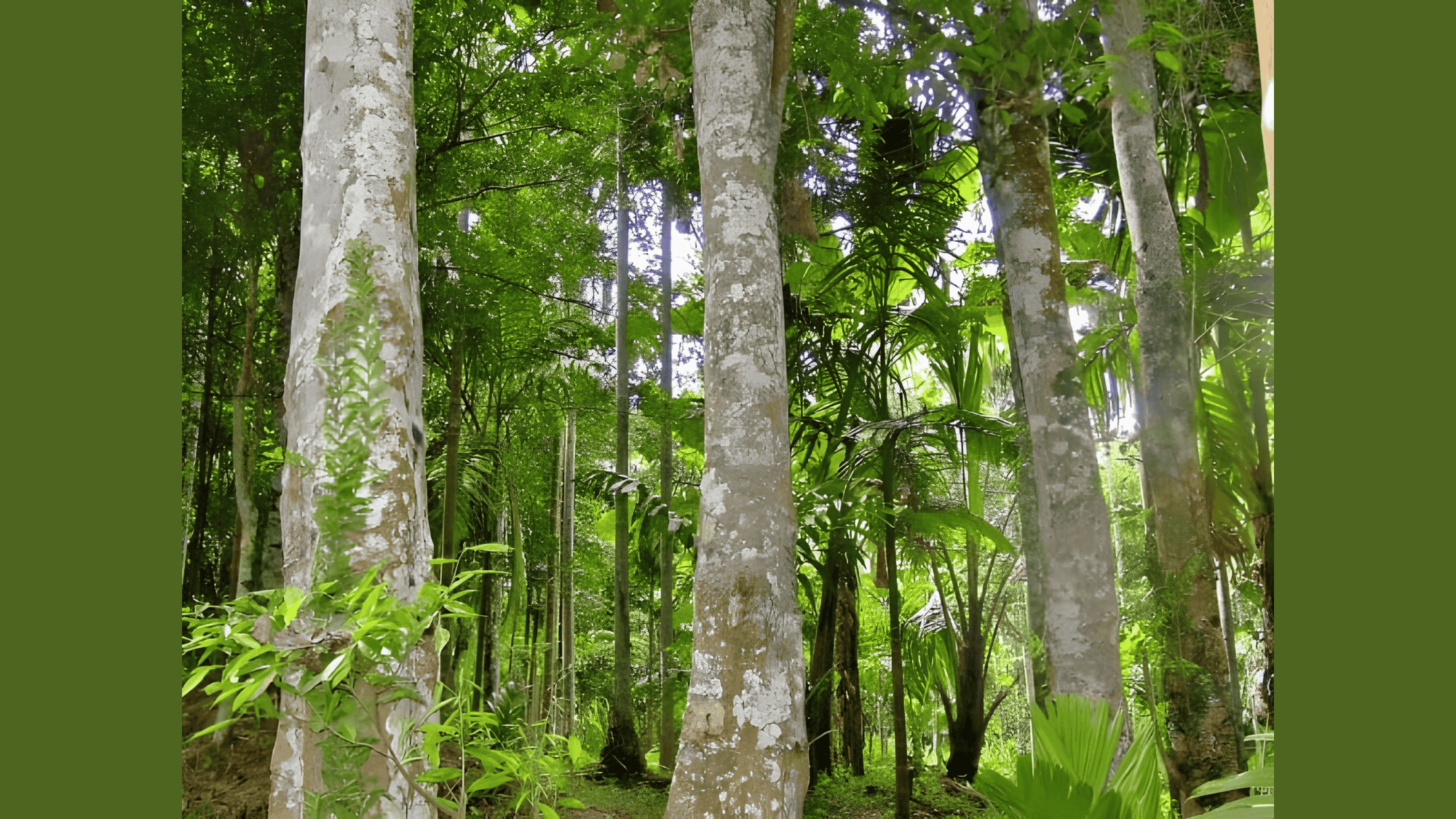
Forming only when Aquilaria trees react to fungal infection, agarwood produces dark, resinous heartwood worth up to $100,000 per kilogram. The infected trees create aromatic compounds as a defense mechanism.
Only 2% of wild trees naturally develop this prized resin, which ranges from light amber to near-black. Darker pieces contain more resin and command premium prices in the fragrance market.
Used for millennia in religious ceremonies across Asia and the Middle East, all Aquilaria species now have CITES protection due to overharvesting. Plantation-grown alternatives rarely match wild specimens’ complexity.
2. African Blackwood – $100-150 per board foot
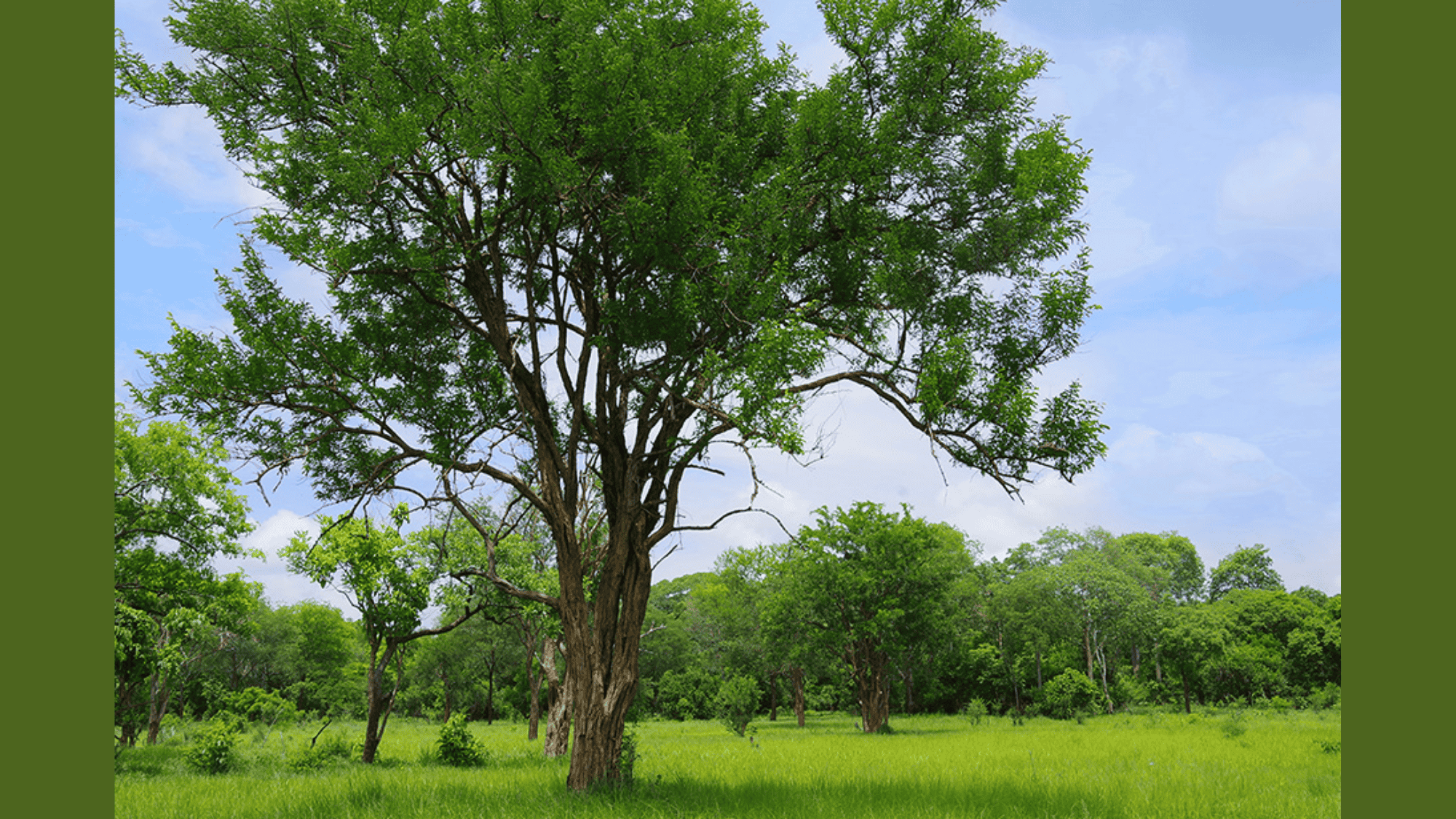
This extraordinarily dense timber features nearly black heartwood that takes a mirror-like polish. Its exceptional stability and acoustic properties make it irreplaceable for high-quality woodwind instruments despite prices exceeding $100 per board foot.
Trees grow extremely slowly, taking up to 200 years to reach commercial size, with a typical specimen yielding only one cubic foot of instrument-grade wood. Its density is so extreme that it sinks in water.
Now critically endangered from overharvesting, African Blackwood belongs to the rosewood family rather than true ebonies. The pale yellow sapwood creates a contrast with the prized dark heartwood.
3. Brazilian Rosewood – $70-100 per board foot
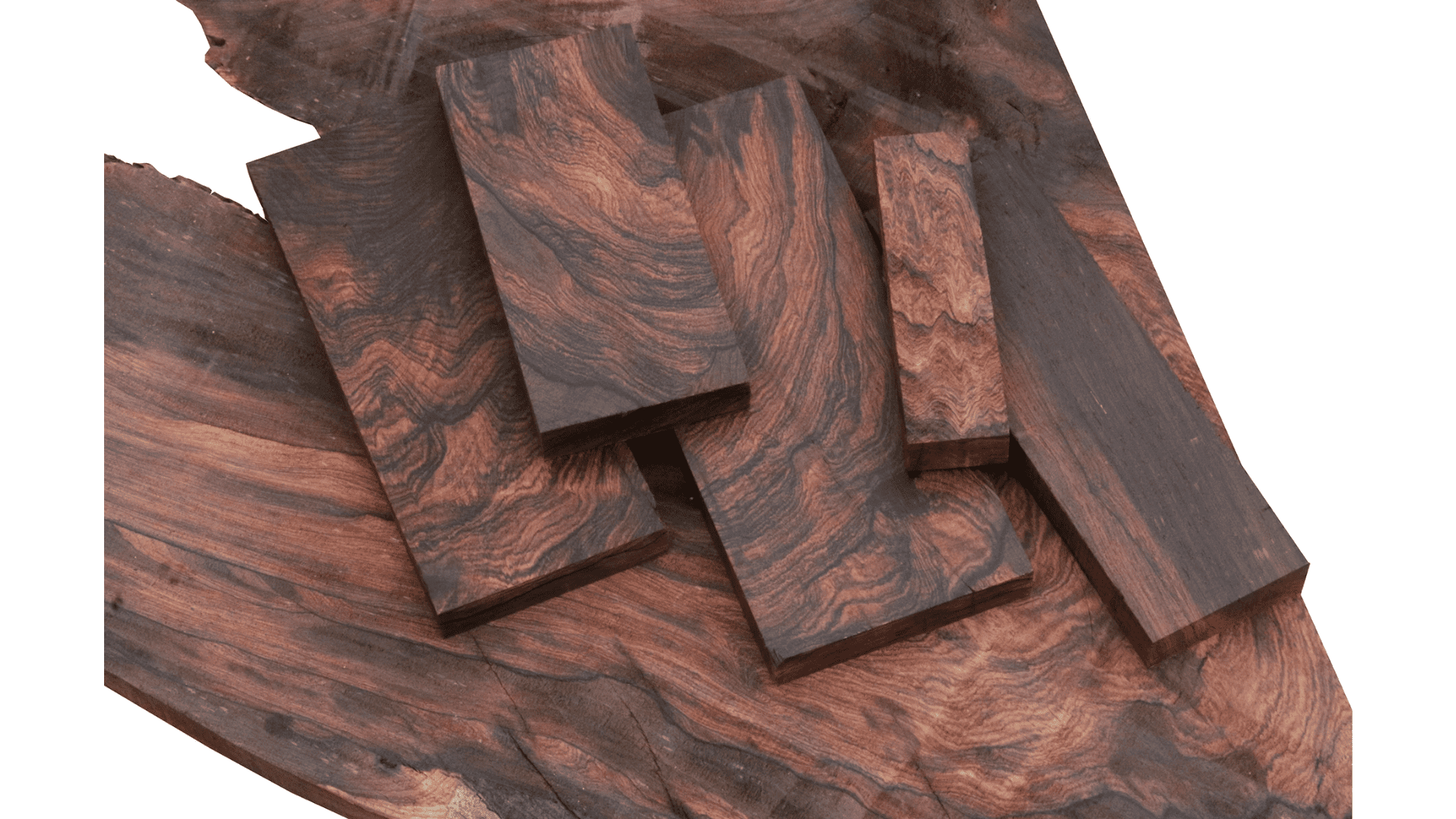
Protected under CITES since 1992, legal specimens come only from pre-ban stock, driving prices to $1,000 per board foot for premium material. Its chocolate-brown coloration with purple-black streaking creates both visual appeal and superior acoustic properties.
When freshly cut, it releases a floral fragrance resembling roses—hence its name. Natural oils provide a distinctive luster that deepens with age, developing the rich patina that makes antique pieces so valuable.
Brazilian Rosewood’s combination of hardness, beauty, and unique tonal qualities made it the gold standard for high-end guitars and premium furniture before trade restrictions. Modern luthiers still seek legal old-growth stock for historically accurate instruments.
4. Amboyna Burl – $10-50 per square foot
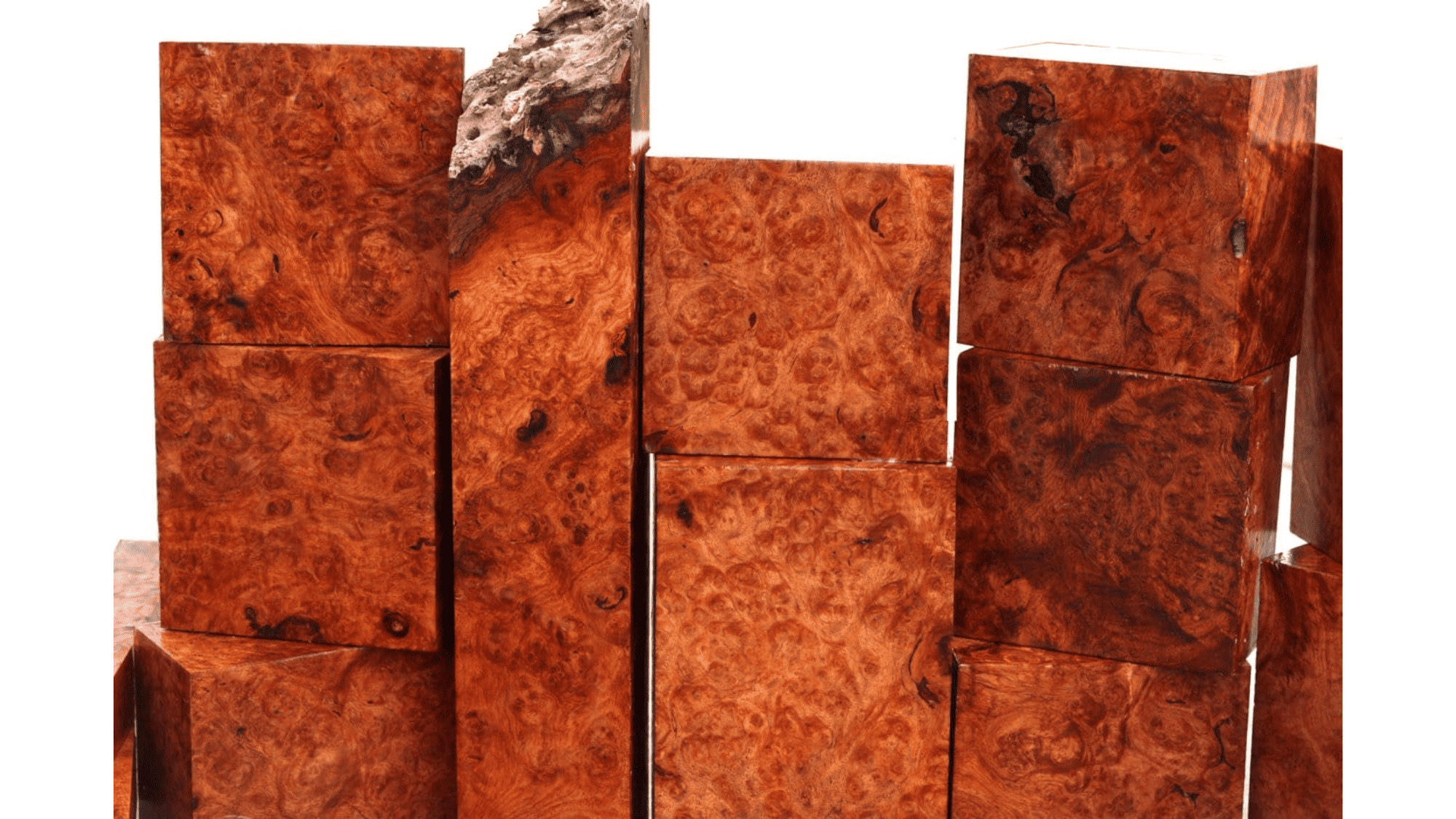
Harvested from abnormal growths on Pterocarpus indicus trees in Southeast Asia, Amboyna burl displays swirling, golden-red patterns with extraordinary depth. Each piece contains unique “birds-eye” formations, making it highly prized for luxury veneers.
Premium specimens command thousands of dollars per square foot, appearing in Rolls-Royce dashboards and museum-quality furniture. The burls form as stress responses in the tree, creating random, wild grain patterns.
When finished, the surface exhibits a three-dimensional quality that shifts with changing viewing angles. Colors range from honey-gold to deep reddish-brown, often featuring darker streaks throughout the interlocked grain.
5. Pink Ivory – $80-100 per board foot
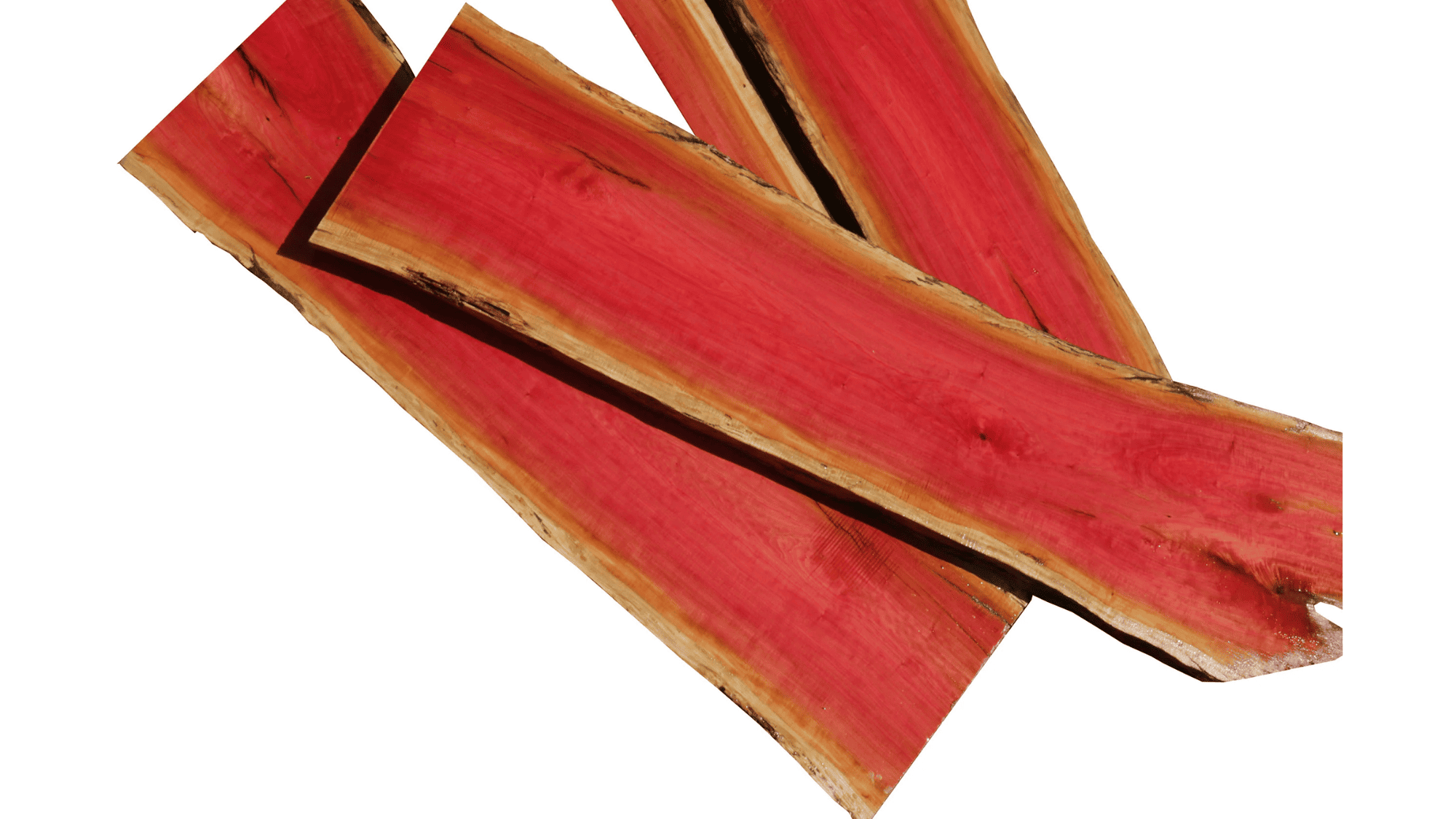
This striking South African hardwood displays vibrant pink to red coloration that remains stable for decades, unlike many reddish woods that brown with age. Historically reserved for Zulu royalty, genuine specimens remain exceedingly scarce.
Its extreme density (990 kg/m³) and tight grain structure allow for exceptional detail in carved pieces. The most valuable specimens display uniform, vibrant pink throughout, without brownish undertones.
Limited growing range and strict harvest regulations contribute to its rarity. Woodworkers prize Pink Ivory for small decorative objects and accent pieces where its unexpected coloration creates dramatic contrast with darker woods.
6. Sandalwood – $100-300 per pound (old growth)
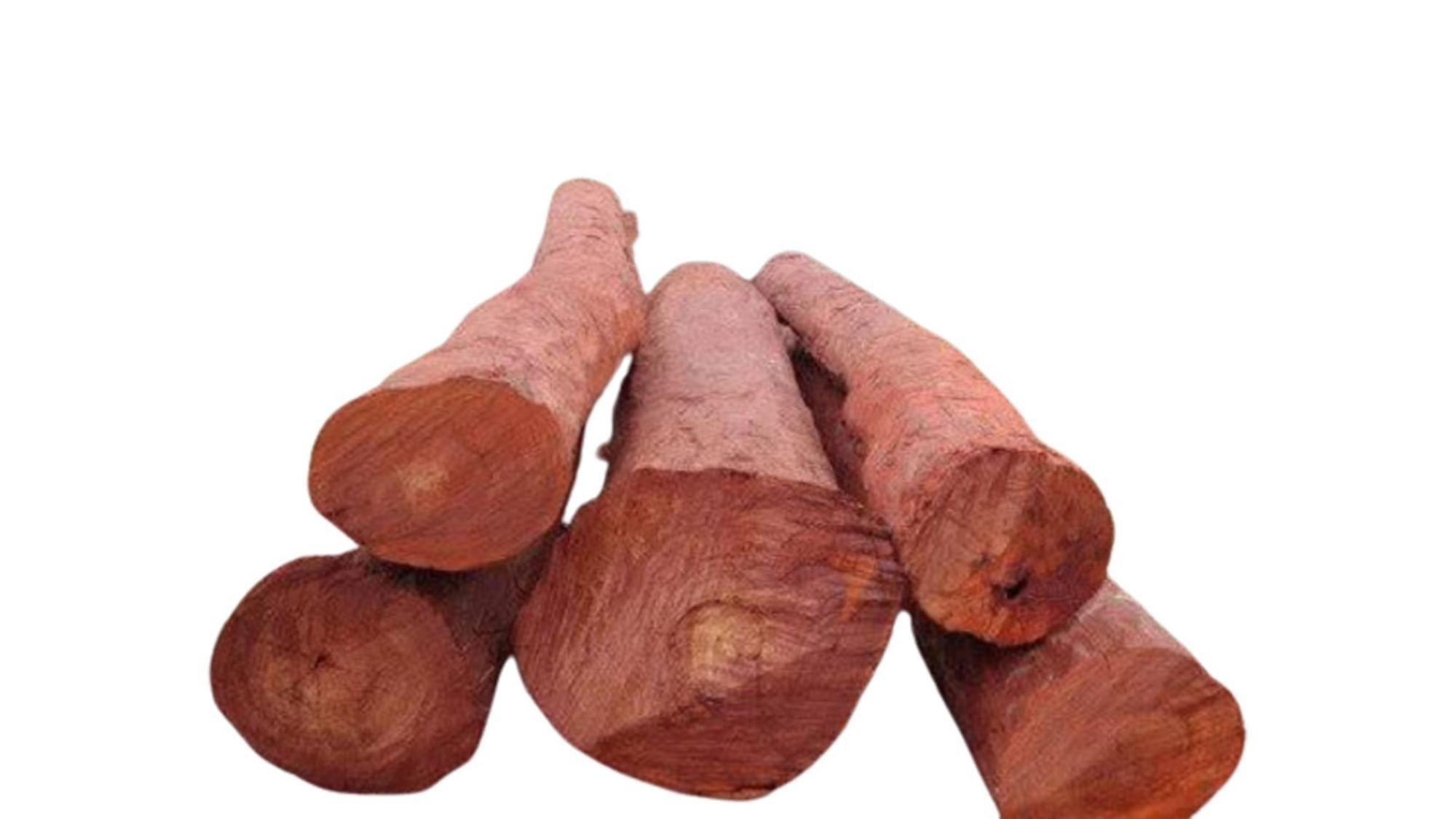
Prized more for aromatic compounds than for woodworking properties, old-growth sandalwood heartwood contains up to 6% essential oil content. This fragrant material plays central roles in Buddhist, Hindu, and Islamic religious ceremonies.
Harvesting requires trees to reach 30+ years of maturity for optimal oil development. The heartwood ranges from yellow-brown to dark reddish-brown, growing more fragrant as the tree ages.
Overharvesting has decimated wild populations, with Indian sandalwood (Santalum album) now critically threatened. Australia has developed sustainable plantations, but many connoisseurs maintain that wild-grown specimens possess superior fragrance profiles.
7. Lignum Vitae – $30-100 per board foot
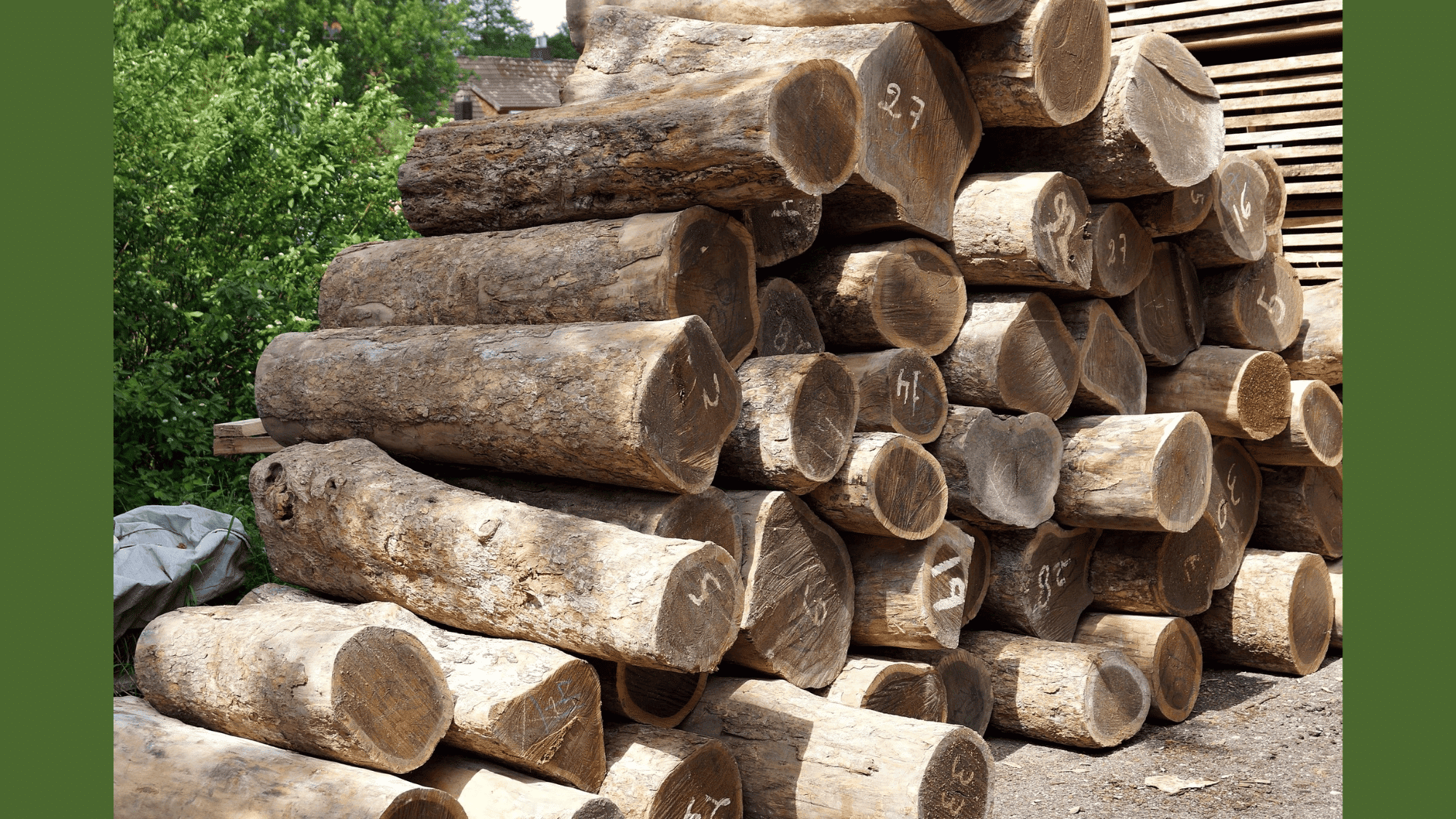
With a density so high that it sinks in water, this self-lubricating wood contains natural oils that made it invaluable for ship bearings before synthetic materials. Its greenish-brown heartwood gradually ages to deep brown with light exposure.
The name means “wood of life” in Latin, referencing traditional medicinal uses. The tree grows extremely slowly in Caribbean climates, creating incredibly dense wood (1,280 kg/m³) that can last centuries in marine environments.
Now protected by CITES due to overharvesting, genuine specimens command premium prices. Its extreme hardness rivals some metals, making it challenging to work but extraordinarily durable for mechanical applications.
8. Snakewood – $30-80 per pound
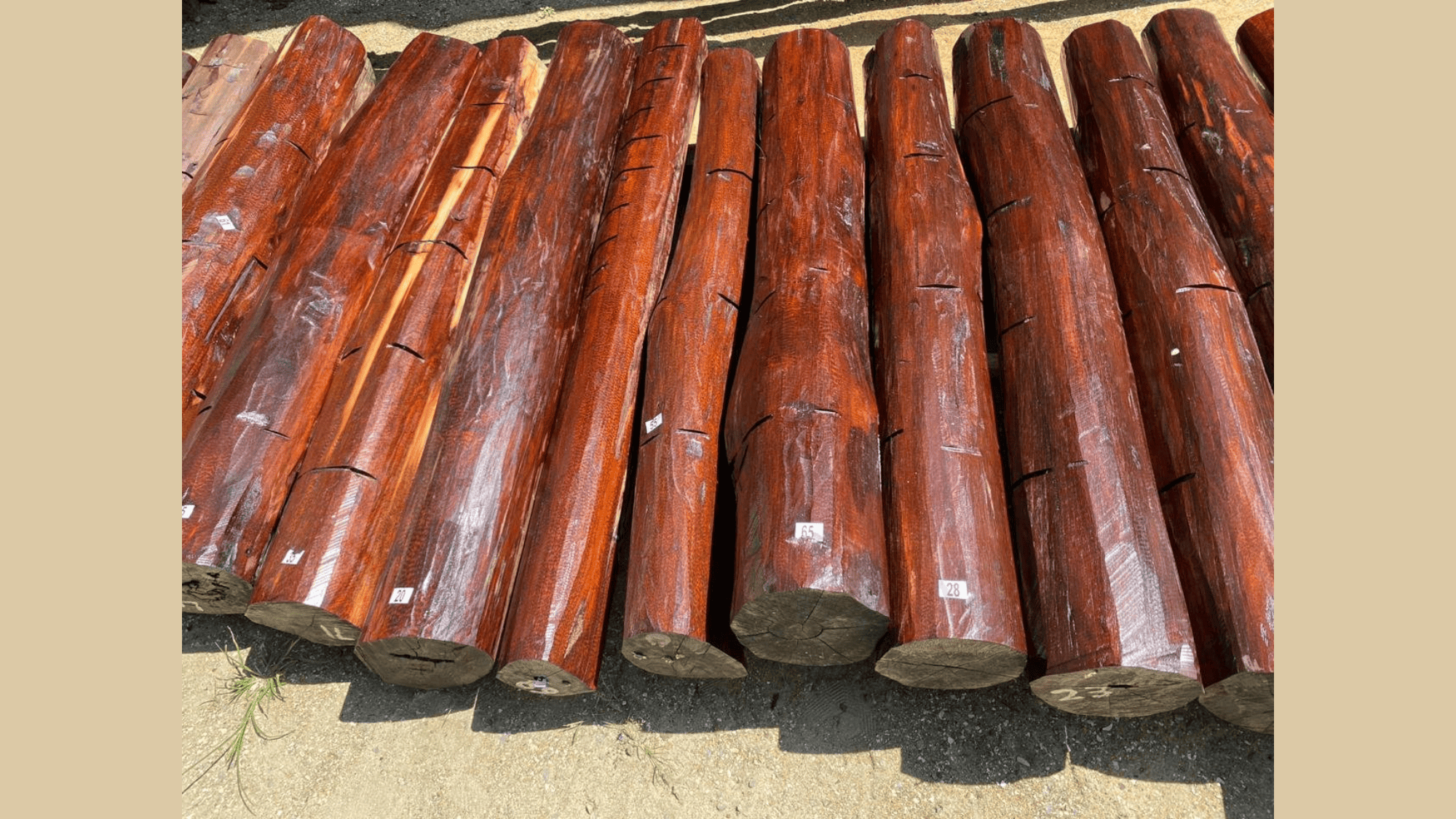
Displaying an unmistakable pattern resembling snakeskin, this South American species (Brosimum guianense) grows extremely slowly, producing small, often flawed sections. The dramatic mottled pattern makes it instantly recognizable among wood enthusiasts.
Its brittleness makes working with it exceptionally challenging, with high failure rates during turning or carving. Premium pieces without checks or cracks command extraordinary prices for knife handles and small luxury items.
The wood tends to continue moving and checking even after proper seasoning, requiring special stabilization techniques. Colors range from golden orange to reddish-brown with dramatic black patterning throughout.`
9. Koa – $25-100 per board foot
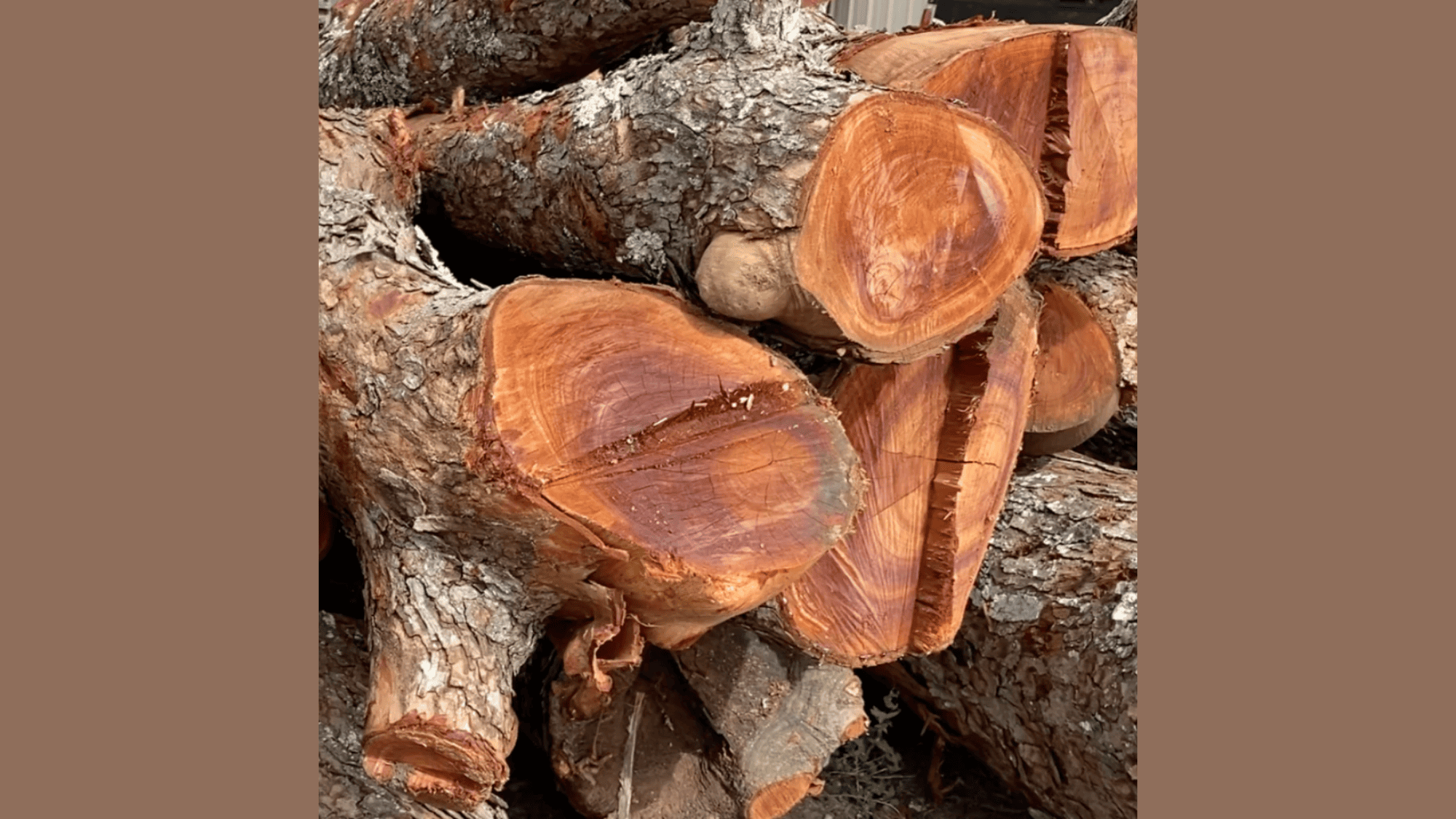
Endemic to Hawaii, this golden-reddish wood with chatoyant figuring grows exclusively on Hawaiian islands. Traditionally used for surfboards, canoes, and ukuleles, it holds profound cultural significance for native Hawaiians.
Strict export regulations and limited habitat keep prices high, with premium figured Koa exceeding $150 per board foot. The stunning curl or “flame” pattern results from waves in the wood fiber reflecting light differently across the surface.
Colors deepen dramatically with age, transforming from golden-tan to rich reddish-brown. The characteristic shimmer or “movement” across figured pieces creates a three-dimensional effect prized for musical instruments and fine furniture.
10. Thuya Burl – $30-250 per pound
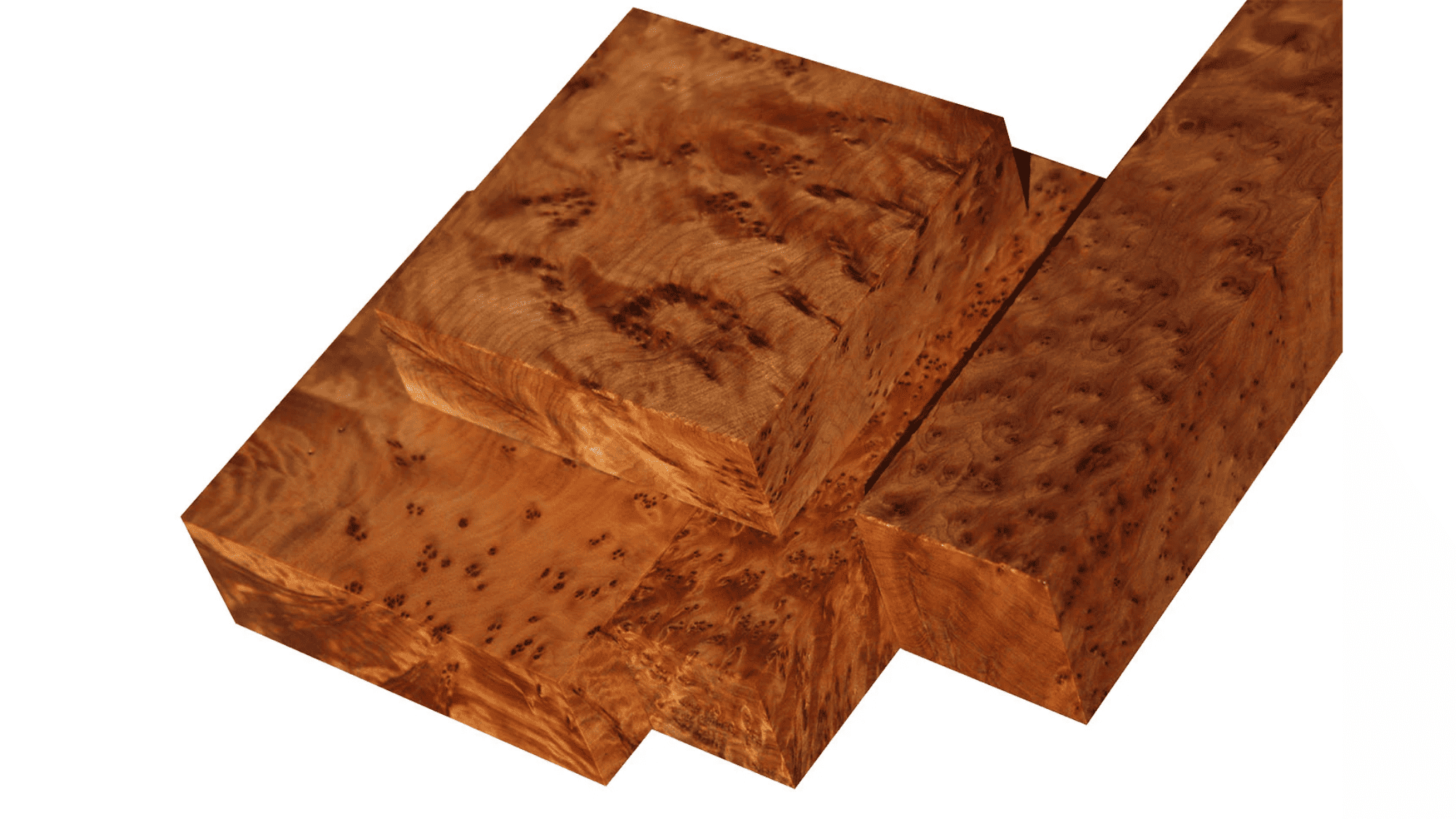
Harvested from the roots of North African Tetraclinis articulata trees, this material shows intricate “bird’s eye” formations in amber and brown tones. Traditional Moroccan craftsmen have used it for centuries in marquetry and decorative boxes.
Each burl’s pattern is unique, making matched sets particularly valuable for luxury applications. The small size of available burls limits their use to smaller objects and veneer rather than solid lumber.
The aromatic oil content gives Thuya a pleasant fragrance and natural luster when polished. Sustainable harvesting practices involve collecting only the burls while leaving trees alive, though the limited natural range keeps supplies scarce.
11. Macassar Ebony – $75-125 per board foot
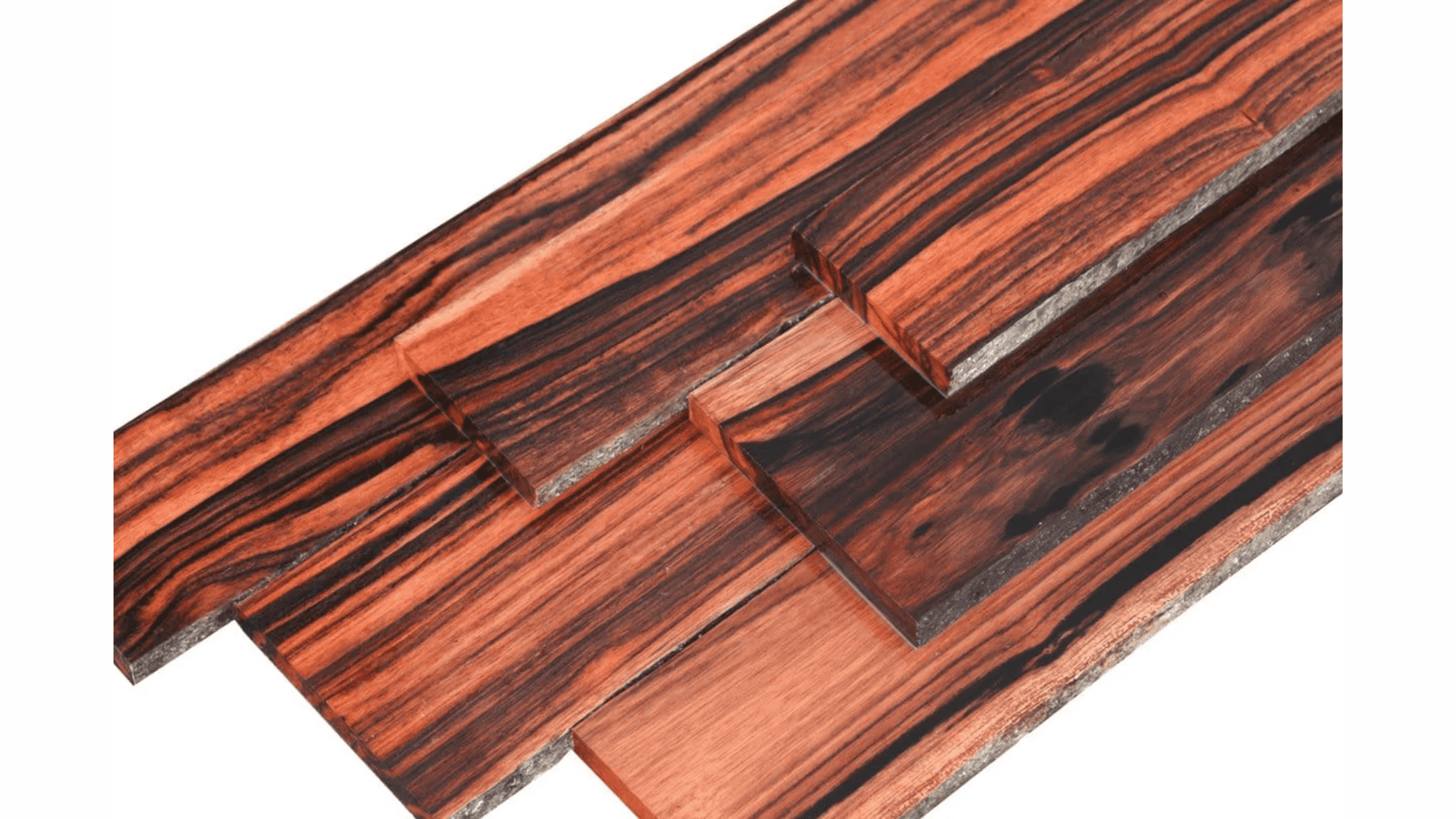
Distinguished by dramatic striping of caramel and near-black bands, this Indonesian hardwood faces severe habitat loss. Premium specimens display consistent, straight striping, highly valued in Art Deco furniture and architectural details.
Its remarkable density (1,050 kg/m³) makes it difficult to work but results in a glass-like finish when properly polished. The wood has minimal movement after seasoning, making it stable for precision applications.
Despite its name, Macassar Ebony differs from true ebonies by featuring distinctive striped patterning rather than uniform black coloration. Sustainable plantation efforts continue, though slow growth rates limit commercial viability.
12. Cocobolo – $60-80 per board foot
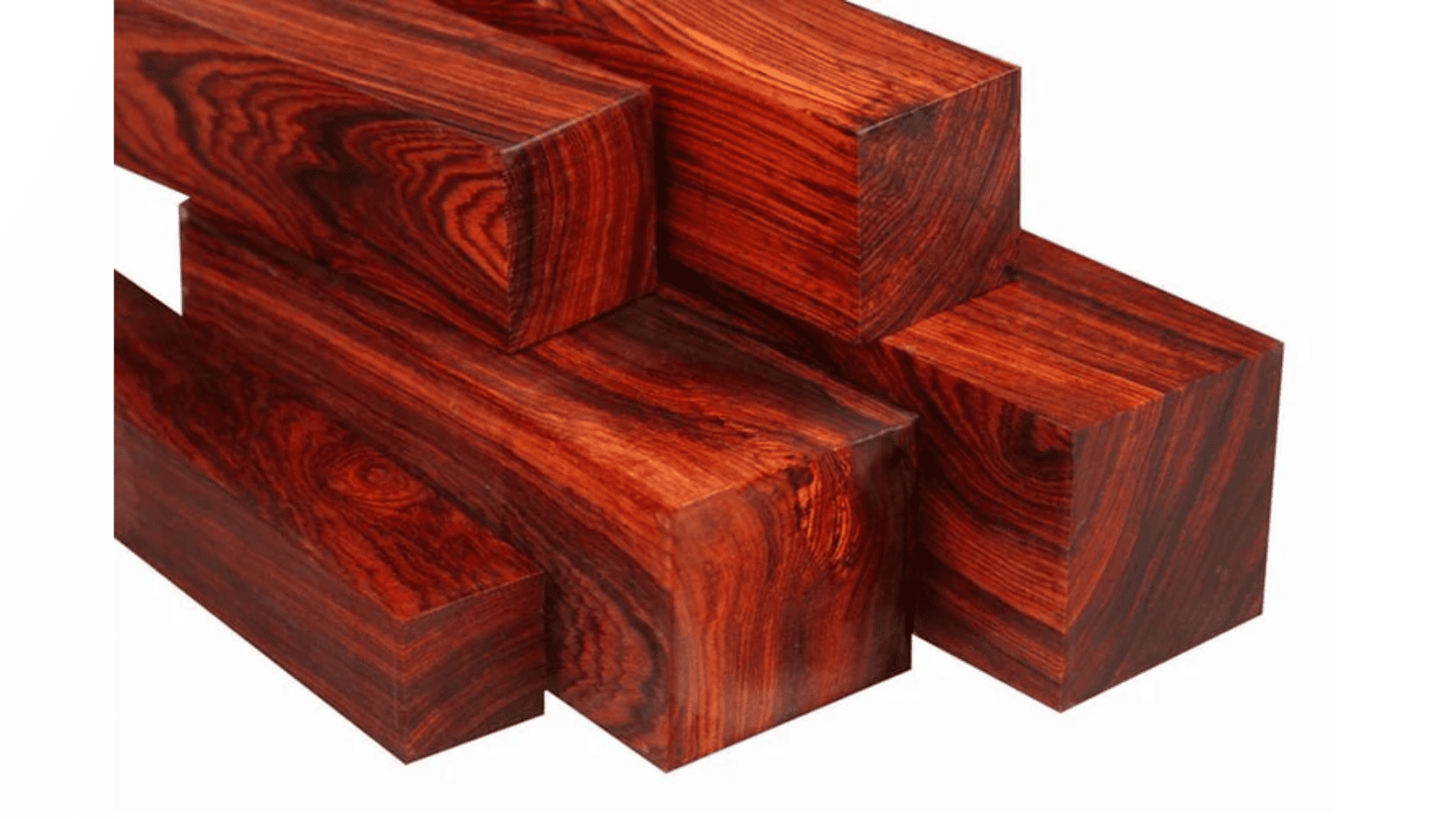
This Central American rosewood variant contains natural oils that create a distinct spicy fragrance when cut. Its color transformation begins with vibrant orange-red that deepens to rich burgundy with black geometric patterns over time.
The high oil content provides natural water resistance but can cause severe allergic reactions in sensitive individuals and makes gluing challenging without special preparation. The oils also contribute to its exceptional luster without finishes.
Now protected under CITES regulations, cocobolo has become increasingly scarce in commercial markets. The wood exhibits remarkable acoustic properties, making it prized for marimba bars and high-end guitar components despite its increasing cost.
13. Kingwood – $50-90 per board foot
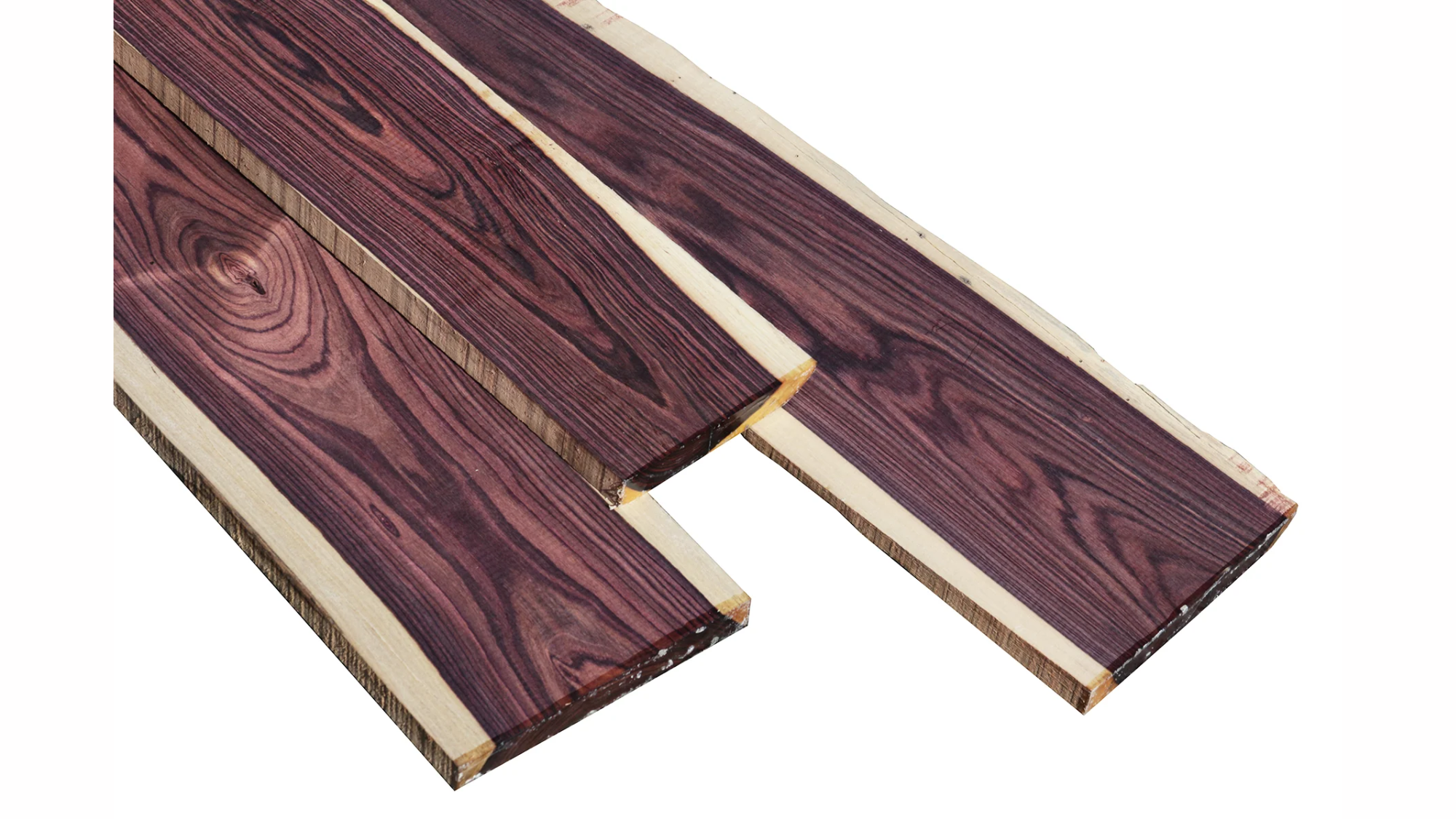
Once reserved exclusively for European royalty (hence the name), this Brazilian relative of rosewood features purple-brown coloration with fine, consistent striping. Small tree size limits available dimensions, making it primarily used for decorative inlays.
Its exceptional stability and fine texture allow for intricate detailing in small luxury objects like jewelry boxes and premium writing instruments. The wood develops a rich patina with age and handling.
Kingwood shares the Dalbergia genus with Brazilian Rosewood but grows in much smaller dimensions. Harvest restrictions and naturally limited supply have made genuine specimens increasingly difficult to obtain for commercial uses.
14. Ebony – $75-100 per board foot
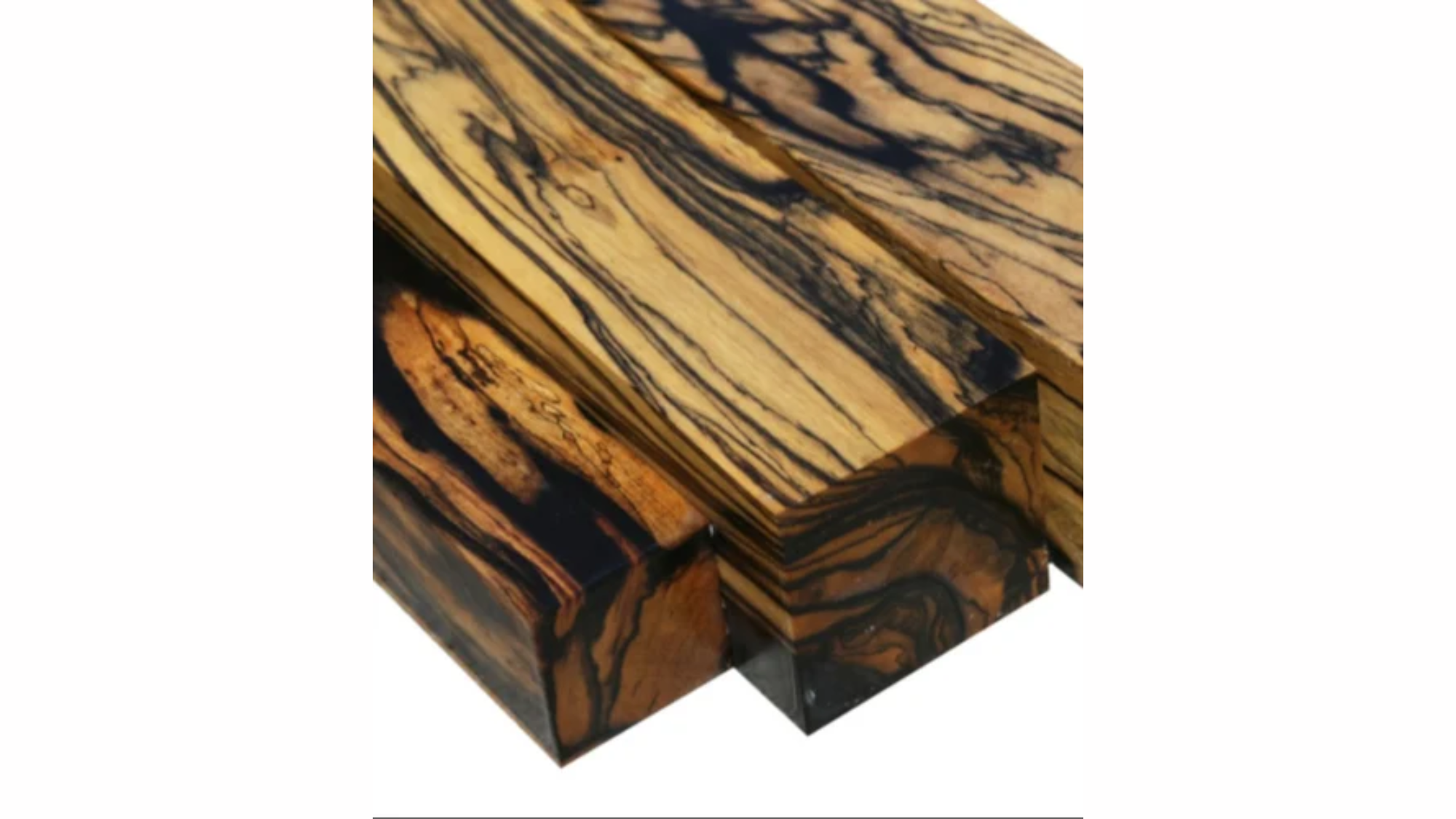
True jet-black ebony without brown streaking has become increasingly rare due to overharvesting. Piano key manufacturers once discarded any piece with the slightest imperfection, contributing to its current scarcity in commercial markets.
Its exceptional density allows for mirror-like polish, while its stability makes it ideal for precision instruments and fine inlay work. The wood shows almost no visible grain pattern, creating a uniform appearance unlike most other timbers.
Modern conservation efforts promote using streaked ebony with natural brown variations, though pure black specimens still command premium prices. Several species across Africa and Asia produce commercial ebony, with Gabon ebony considered among the blackest.
15. Burr Walnut – $30-100 per square foot
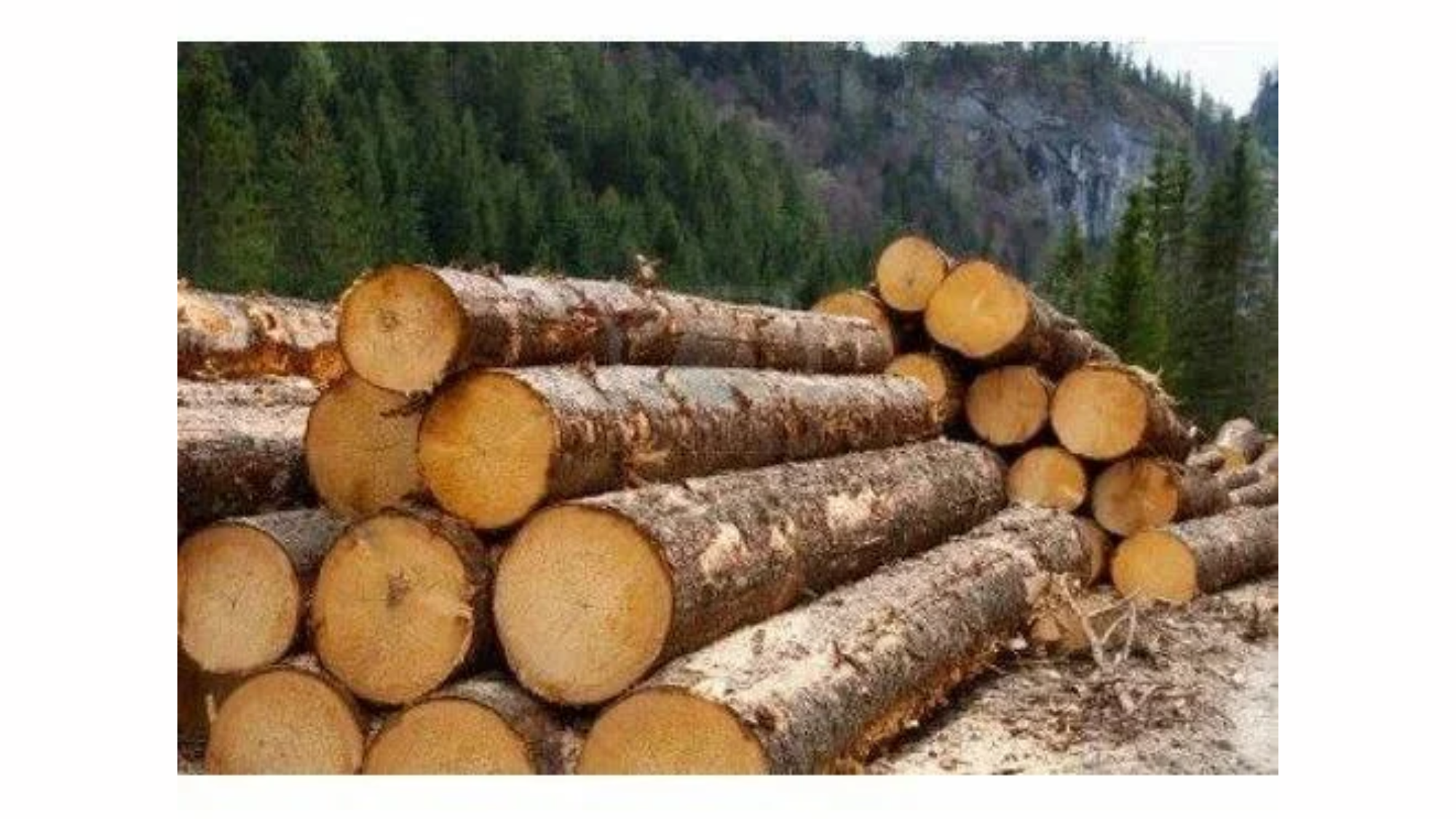
Prized for centuries by furniture makers, these abnormal growths on walnut trees create swirling, dreamlike patterns unlike regular walnut grain. Luxury car manufacturers use burr walnut veneers for dashboard panels in their flagship models.
The unpredictable, three-dimensional appearance creates an impression of depth that flat-grained woods cannot match. Colors range from warm honey to deep chocolate, often with darker veining throughout the complex structure.
Each burr forms as a response to stress or injury, creating completely unique patterns. The irregular grain direction makes working burr walnut extremely challenging, requiring sharp tools and careful technique to avoid tearout.
16. Ziricote – $40-70 per board foot
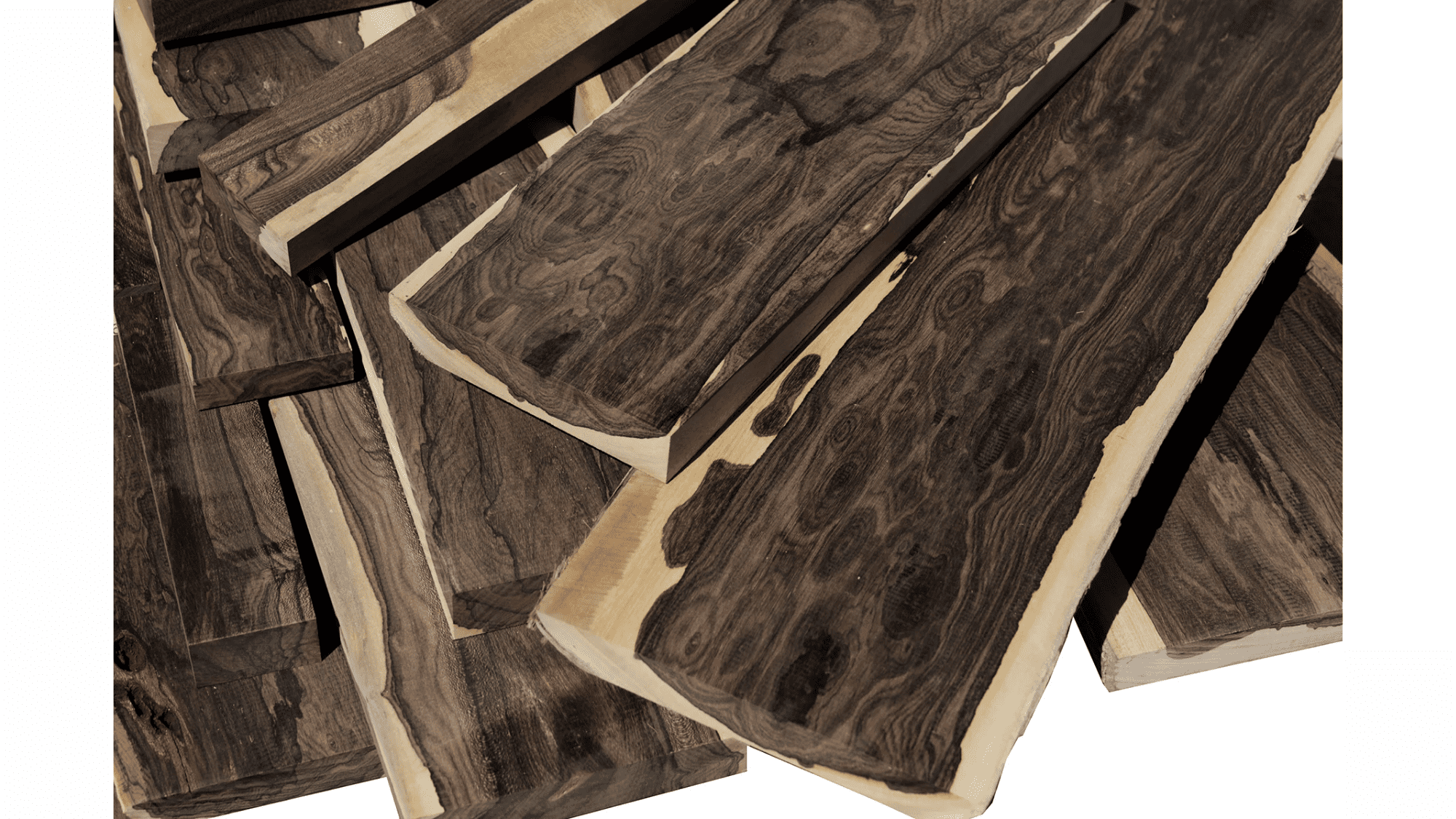
Often mistaken for Brazilian Rosewood, this Mexican hardwood features dramatic black spider-web patterns against gray-brown backgrounds. Some pieces display a three-dimensional “landscape” grain pattern that furniture makers prize for showpiece projects.
Its natural luster develops a remarkable chatoyance when finished, seeming to shift as viewing angles change. The dense, fine-grained structure allows for exceptional detail in carved pieces and takes a mirror-like polish.
Unlike many exotic woods, ziricote remains legally harvestable, though supplies fluctuate with Mexican export regulations. The dramatic coloration darkens and improves with age, developing greater contrast between the black figuring and background.
17. Bocote – $30-50 per board foot
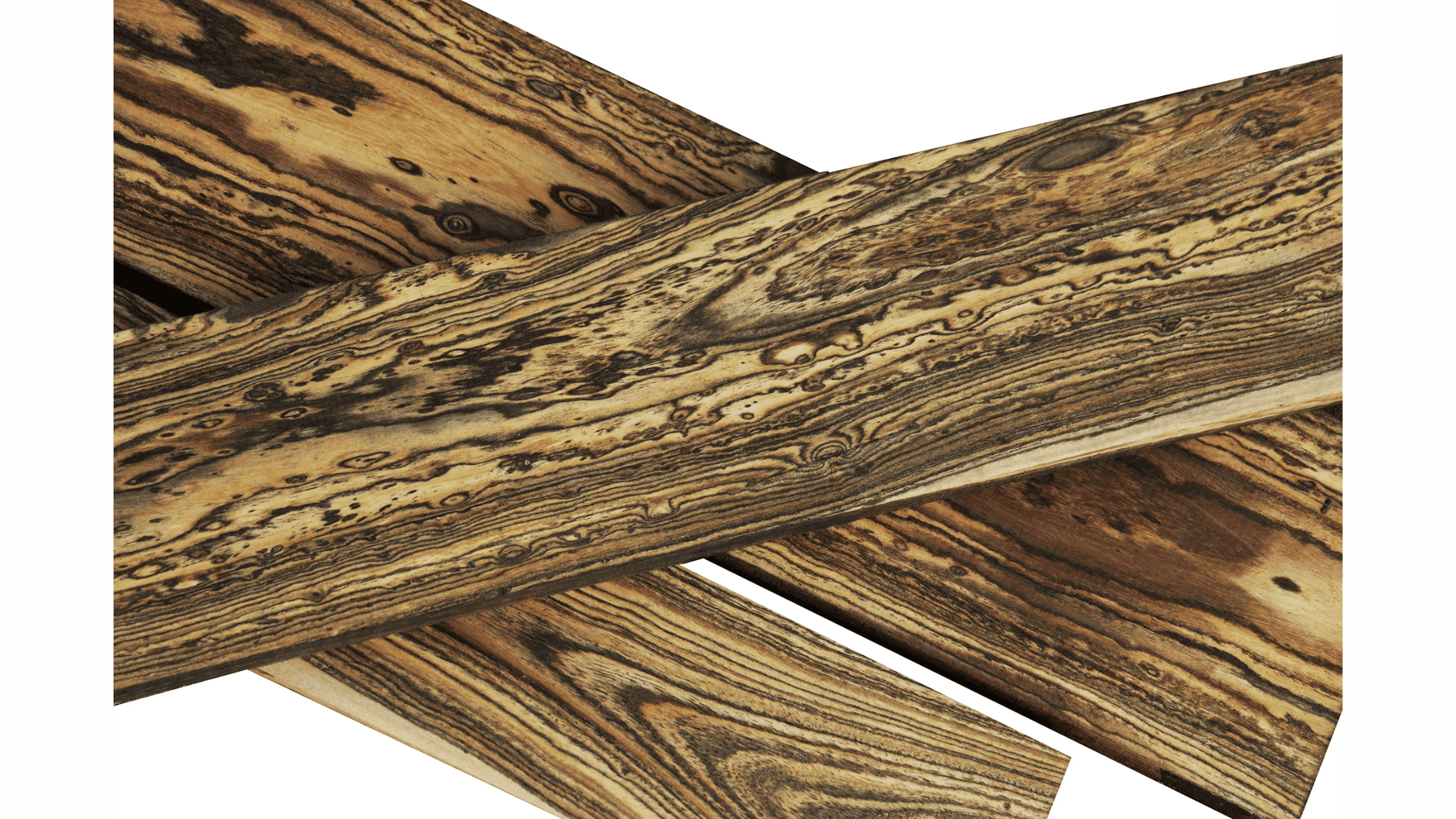
This remarkable timber transforms from a dull brown when freshly cut to vibrant purple with exposure to ultraviolet light. The unique coloration comes from compounds called quinones in the wood’s structure that oxidize when exposed to air.
Extremely dense and durable (870 kg/m³), purpleheart maintains its purple hue for many years before gradually shifting to a deeper brownish-purple with age. The wood dulls cutting edges quickly due to its hardness and silica content.
Native to Central and South America, purpleheart sees use primarily as accent pieces and inlays where its distinctive color creates dramatic contrast with lighter woods. Its stability and rot resistance make it suitable for outdoor applications despite its premium cost.
Image Generation Prompt: Comparative photograph showing freshly cut purpleheart alongside fully oxidized pieces, displaying the transformation from brown to vibrant purple, with one piece partially sanded to reveal the color change process.
18. Purpleheart – $20-35 per board foot

This Central American hardwood displays dramatic yellow-orange coloration with bold black striping, creating an eye-catching appearance comparable to tiger stripes. The contrasting colors remain stable over time, with minimal darkening compared to many exotic woods.
Known for producing beautiful figuring, bocote often displays complex swirling patterns that make each piece unique. The moderate natural oil content provides some water resistance and allows for a satiny finish without heavy applications of finish.
Working properties include moderate density (790 kg/m³), good stability after proper seasoning, and relatively easy machining despite the interlocked grain. The distinctive spicy fragrance when cut adds to its appeal among woodworkers, creating small decorative objects.
19. Bubinga – $25-70 per board foot
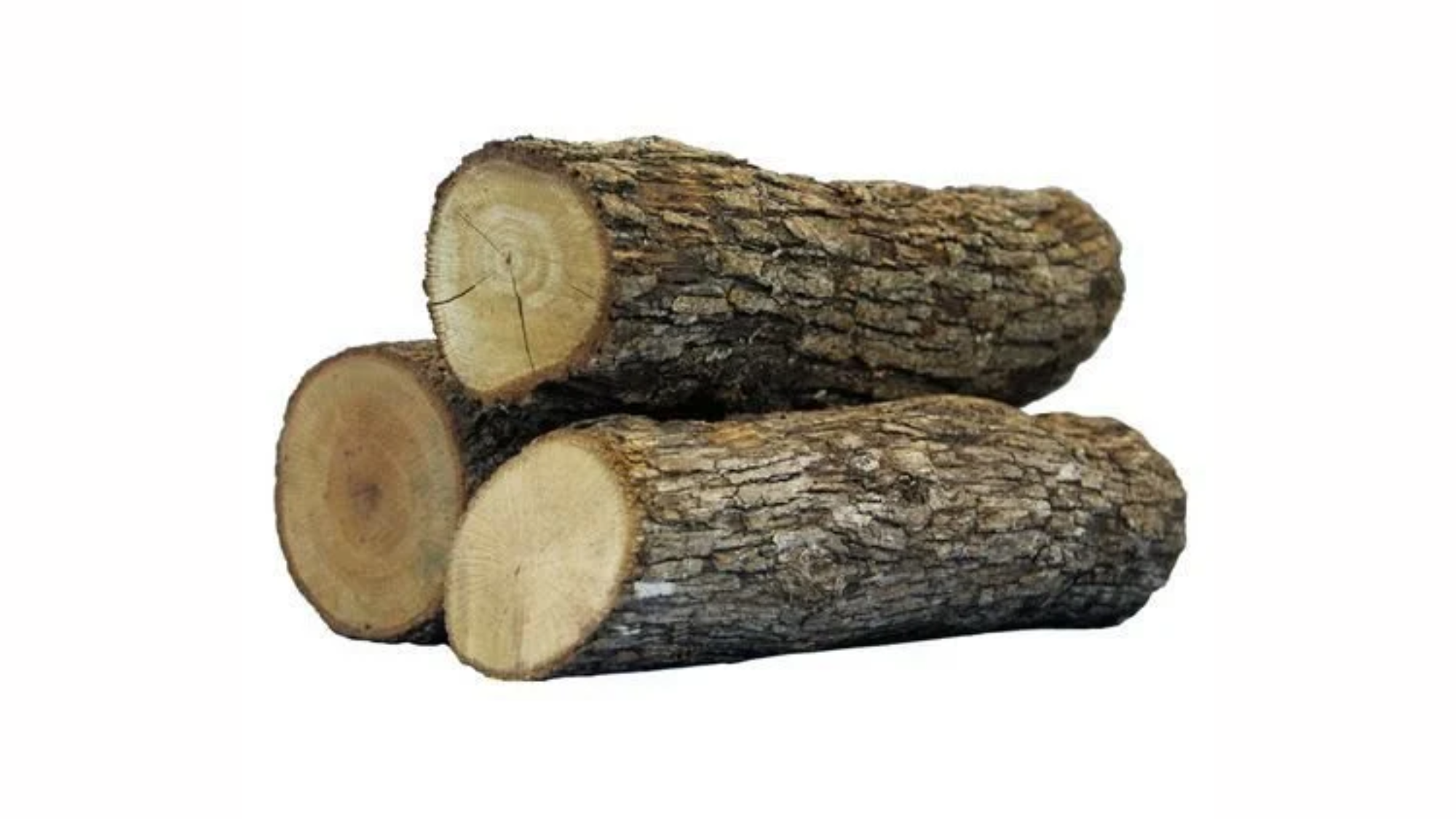
Sometimes called African Rosewood, this timber can produce massive slabs from its enormous trunk diameter, making it valuable for large table tops and architectural elements. Premium pieces display waterfall or pommele figuring, creating a three-dimensional quilted appearance.
Its exceptional strength-to-weight ratio makes it popular for acoustic instruments despite its considerable density (890 kg/m³). Colors range from pinkish-red to deeper reddish-brown, often with purple undertones and darker purple veining.
Now facing harvest restrictions in many regions, bubinga has become increasingly difficult to source in large dimensions. The wood is dimensionally stable after proper seasoning, but can be challenging to work with due to its hardness and interlocked grain.
20. Curly Maple – $15-60 per board foot
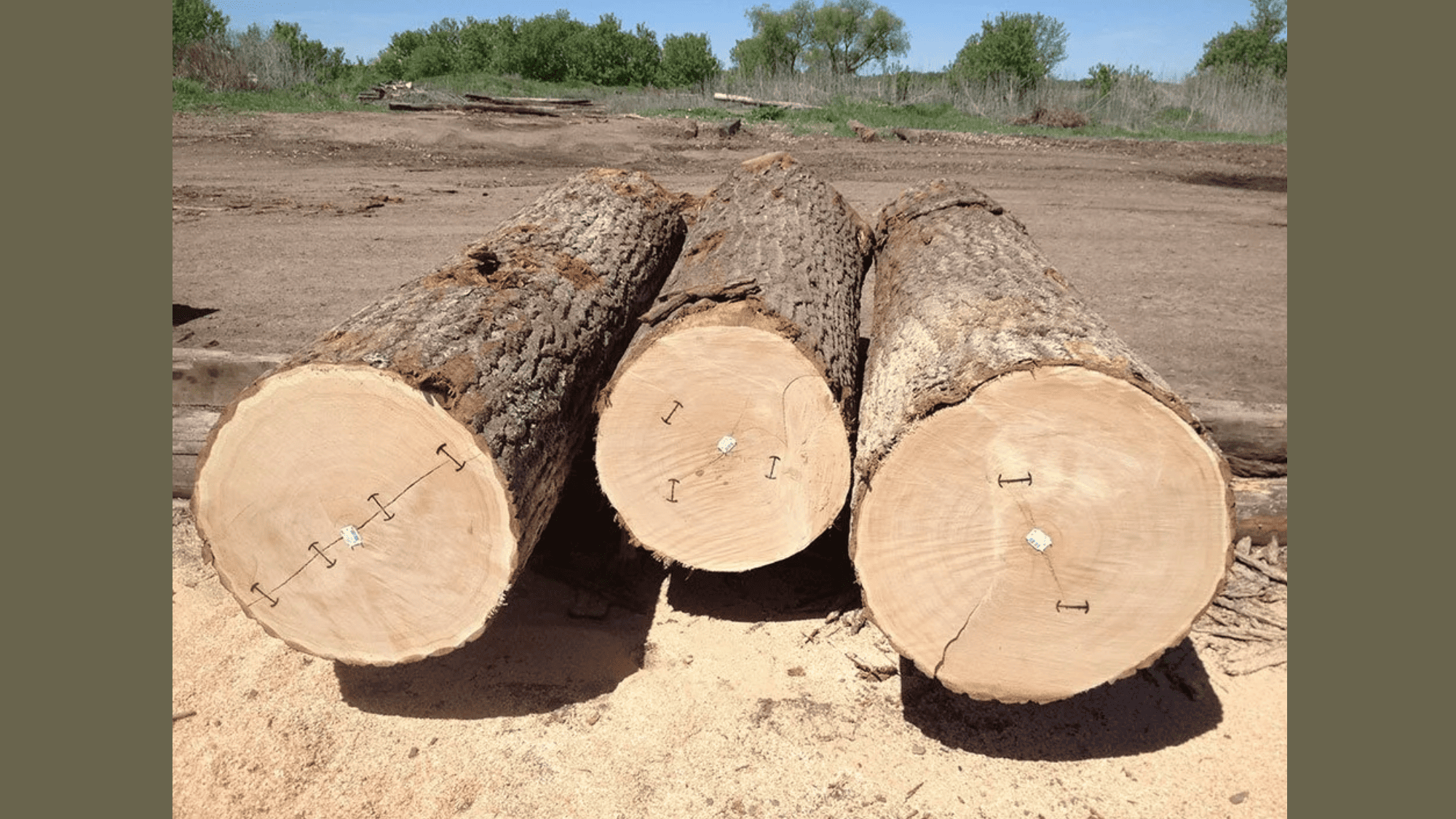
This figured variant of maple displays a rippling pattern caused by undulating wood fibers that reflect light differently across their surface. Most prized in violin and guitar construction for both visual appeal and tonal qualities.
When finished, the figuring creates a holographic effect that appears to move as viewing angles change—a phenomenon called chatoyance. The degree of figuring ranges from subtle ripples to dramatic “fiddleback” patterns where the ripples appear tightly compressed.
Colors range from pale cream to light amber, darkening slightly with age and UV exposure. The wood remains relatively stable and easy to work despite the irregular grain direction, making it accessible for both professional and hobbyist woodworkers.
21. Holly – $15-30 per board foot
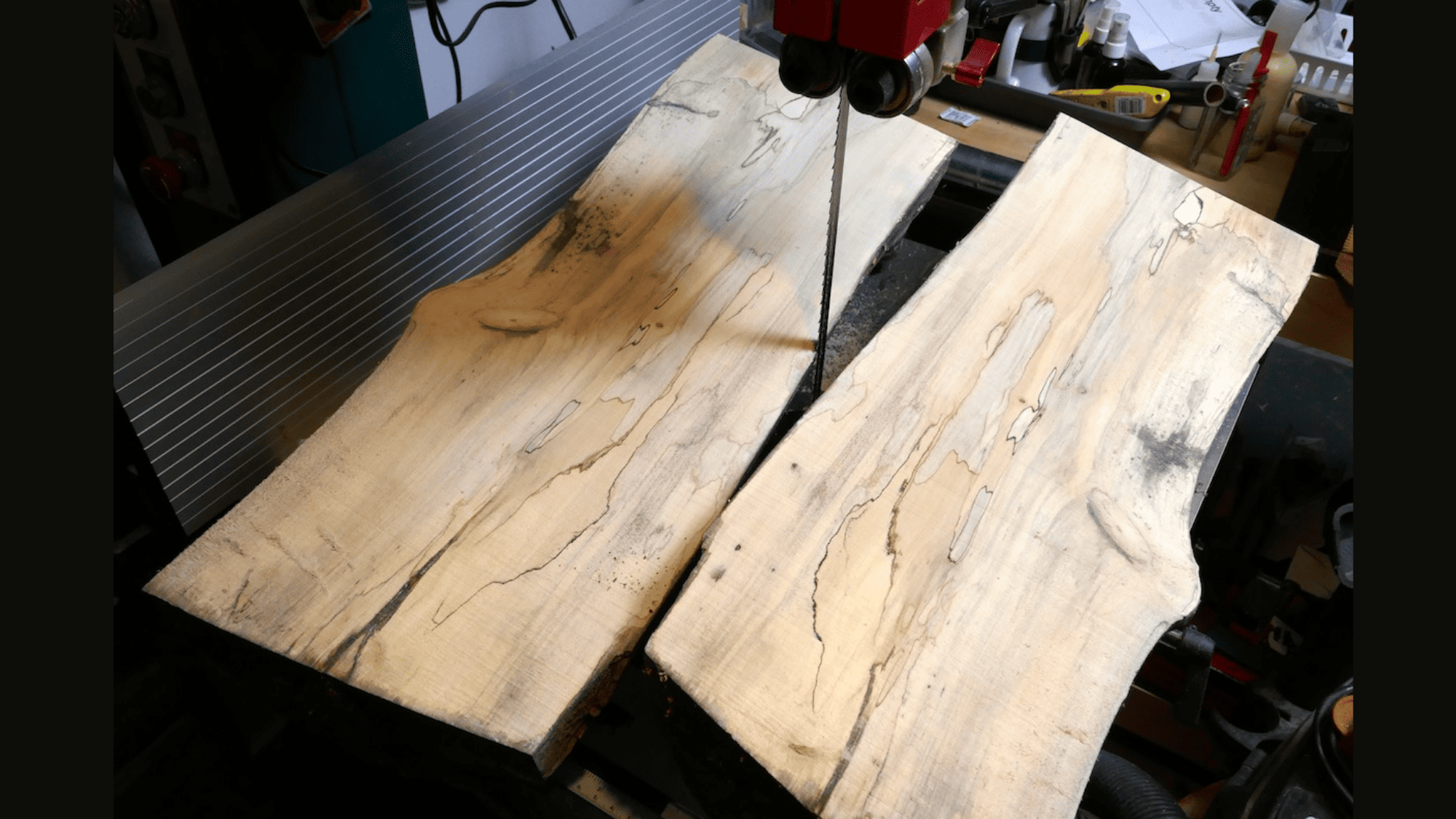
Prized for its exceptional whiteness in a world of predominantly brown or tan woods, holly provides a stark contrast in inlay work. Chess makers prize it for white pieces due to its color uniformity and fine texture, accepting detailed carving.
Exceptionally difficult to dry without fungal staining, which adds to its cost and limited commercial availability. The wood must be harvested in winter when sap content is lowest, then dried with extreme care to maintain its pale color.
Holly trees produce small trunk diameters, limiting available dimensions for woodworking. The wood works easily with sharp tools but tends to burn with dull cutters due to its density (755 kg/m³) and fine-grained structure.
Origin and Market Table
| Sr. No. | Wood Type | Primary Origin | Main Market |
|---|---|---|---|
| 1. |
Agarwood |
Southeast Asia | Incense, perfumes, medicinal |
| 2. |
African Blackwood |
Tanzania, Mozambique | Musical instruments |
| 3. |
Brazilian Rosewood |
Brazil | Luxury guitars, antique furniture |
| 4. |
Amboyna Burl |
Southeast Asia | Luxury car interiors, fine veneers |
| 5. |
Pink Ivory |
Southern Africa | Art objects, high-end turning |
| 6. |
Sandalwood |
India, Australia | Fragrance industry, religious items |
| 7. |
Lignum Vitae |
Caribbean | Specialty mechanical components |
| 8. |
Snakewood |
Suriname, Brazil | Knife handles, luxury items |
| 9. |
Koa |
Hawaii | Furniture, musical instruments |
| 10. |
Thuya Burl |
Morocco | Decorative boxes, luxury veneers |
| 11. |
Macassar Ebony |
Indonesia | Furniture, architectural details |
| 12. |
Cocobolo |
Central America | Fine furniture, knife handles |
| 13. |
Kingwood |
Brazil | Inlays, luxury pens, and small objects |
| 14. |
Ebony |
Africa, Asia | Piano keys, fine inlays |
| 15. |
Burr Walnut |
Europe, North America | Luxury veneers, dashboard panels |
| 16. |
Ziricote |
Mexico, Central America | Fine furniture, decorative objects |
| 17. |
Bocote |
Mexico, Central America | Decorative boxes, knife handles |
| 18. |
Purpleheart |
Central and South America | Decorative accents, inlays |
| 19. |
Bubinga |
West Africa | Large furniture, acoustic bass guitars |
| 20. |
Curly Maple |
North America | Musical instruments, furniture |
| 21. |
Holly |
Europe, North America | Inlay work, chess pieces |
Conclusion
The market for rare woods continues to shift as conservation efforts increase and sustainable alternatives gain traction. While these precious materials remain symbols of luxury and exclusivity, their future availability faces growing uncertainty.
Ethical sourcing, certification programs, and artificial cultivation methods now play crucial roles in the rare wood trade.
For collectors and craftspeople, these woods represent not just material possessions but connections to ancient forests and traditional woodworking heritage.
As we look forward, finding the balance between appreciation for these natural wonders and responsibility toward forest conservation becomes increasingly vital in preserving both craft traditions and ecological diversity.

